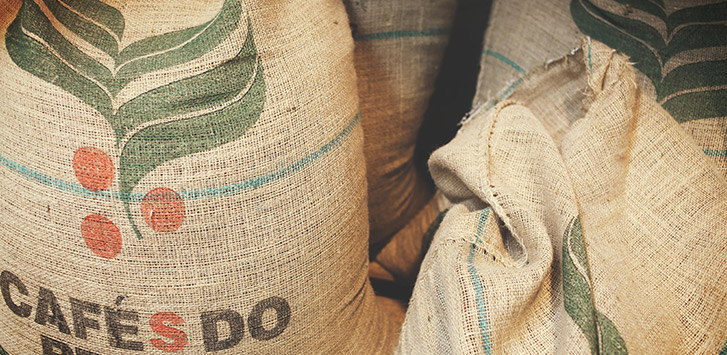
As specialty coffee evolves, the differences between each brewed cup become more important. Everyone wants to know how they can make the best cup of coffee. Of course, the most important thing to keep in mind is that a lot of coffee flavor and style comes down to preference. The question we’ll be addressing today is one of these issues: single origin coffee vs coffee blend.
Single Origin Coffee Vs. Coffee Blends
Single origin coffee is coffee that all comes from one location, often one specific farm. For example, if you bought coffee from Jinotega, Nicaragua, it would be considered single origin.
Coffee blends are created by combining multiple coffees together. This could be beans from multiple countries or from multiple regions within a country. Coffee makers are able to capitalize on their different flavors and blend them to create something new.
But which is better - single origins or blends?
Why You Should Choose Single Origin Coffee
Single origin coffee beans create a beautiful platform for an origin's flavors to shine. This is what makes a cup of coffee especially interesting, since the flavors vary so much.
Single origin coffee also gives you a lot of control over the flavor of your coffee. Using different roasting levels and brewing methods, advanced coffee drinkers can decide what flavors to enhance. If you're new to coffee, single origin will help you differentiate between different flavors. You can put your knowledge to the test with coffee cupping when you're ready.
One problem with single origin is that there can be inconsistency with the beans. Little factors during the growing process can affect a full batch. If that batch is all you have in your cup of coffee, it may noticeably change the taste.
With that all being said, take a look at some of our favorite Single Origin coffees. Each one tastes completely unique, allowing different aspects of the coffee to really shine.
Grown in the Minas Gerais region of Brazil, Cerrado 17/18 beans brew into a sweeter, well-balanced coffee. This coffee has low acidity and a medium body. The most prominent flavors are nutty, baker’s chocolate, and brown sugar.
Adame Gorbota G1 beans from Ethiopia's Yirgacheffe region make a bright, sweet coffee with cherry undertones. The coffee beans actually are dried with cherries prior to final processing to strengthen this flavor.
Our Fina La Santa SHB EP beans come from Panama's Boquete region. They make a balanced, medium-bodied cup with exotic flavors. These beans are grown in volcanic soil at high altitudes, lending to excellent development of flavor. The resulting coffee has notes of sweet honey and chamomile with pear and lemon.
Why You Should Try Coffee Blends
Coffee blends get a bad wrap for being the “leftovers” that couldn’t be sold on their own. Realistically, the issue is more complex than that.
Coffee providers do often use blends to make a more uniform flavor profile. If a supplier gets beans from several locations, the coffee seller can combine those beans to create a single product. Over time, the combination will help to hide smaller differences in the beans. In some cases, the coffee beans are roasted longer to hide more of their flavor and allow them to blend better.
Creating an enjoyable coffee blend is an art. Coffee flavors can quickly become muddled by blindly adding beans together. Instead, a good coffee blend will consider all of the flavors and create something new and interesting.
Another important characteristic of blends is their ability to take the edge off of polarizing flavors. If you love the flavor notes in a bean but not the acidity, you could try combining it with a mellower bean. For this reason, espresso blends work well, since this brewing method amplifies the coffees' flavors.
CBC has experimented with several different coffee blends over the years, curating customer favorites. We offer our favorite selections here. If none of these appeal, you can create blends on your own. Simply follow our guide.
The Ferdelance blend does what blends do best, brewing into a well-balanced cup. Depending on how you choose to roast it, Ferdelance offers a variety of flavors.
Roasted dark, the blend is very potent. Roasted lighter, it comes out much sweeter. It has a rich flavor with a heavy body. This blend is known for its crema and nutty richness.
The Four Horsemen blend uses beans from Costa Rica, El Salvador, Mexico, and Guatemala to make a great cup of coffee. This blend is known for its distinguished balance of acidity and fruitiness. The combinations gives the coffee a unique body, which, combined with its flavor, makes it an excellent blend to try.
Kope Kapuna provides the perfect holiday blend any time of the year. This blend takes advantage of the unique ability of blends to create new flavors. It combines flavors from several beans, providing a fantastic mix of chocolatey, fruity, and spicy notes.
Which Is Right for You
When it comes down to it, both single origin coffee and coffee blends can be enjoyable. So which is right for you? A good general rule of thumb is if you’re looking for a consistent, balanced brew, then you’ll likely enjoy a blend. If you’re looking to discover certain flavor notes or unique characteristics, single origin is better at highlighting these.
The best approach is really to try both and see which you prefer. Coffee Bean Corral offers ½ pound bags of all our beans, so you don’t have to commit to anything you may not enjoy. We also have sample packs with different kinds of beans. If you aren’t sure which you might prefer, feel free to try this out!
That’s all for today. Happy Roasting!